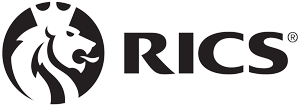
Inflation and its effect on used asset prices
With the recent news that inflation is expected by the Bank of England to finally come down towards its target rate of 2% per annum in the near future (a target that has stayed the same for a long as I can remember, incidentally, and I can’t help but wonder whether the criteria for this target is ever reviewed!), one would hope that the inflationary increases in the cost of purchasing new business assets will begin to stabilise to a more sustainable level. The last few years have seen big increases in the new cost of plant, machinery, equipment, motor vehicles, furniture and other tangible assets. This is something which greatly affects the insurance valuation advice that Marriott & Co. provides to its corporate clients and makes up-to-date price research extremely important. However, what some people don’t appreciate is that inflation affecting the new cost (insurance value) of assets also has a knock-on effect on used asset prices (second-hand market value):
As well as the highly publicised rise in second-hand motor vehicle prices (the ‘bubble’ pertaining to which, we perceive has ‘burst’ somewhat in the last year), we have noted second-hand plant & machinery in certain industries selling for prices in recent years that are well beyond what was considered normal a few years ago. I believe this is, at least in part, due to new machines being a benchmark “comparable” for used machines. In other words, prudent buyers considering purchasing second-hand machinery will firstly look at what it would cost them to purchase a new machine of the same function, and will inevitably bear this in mind when formulating an offer for a used machine, making a price adjustment in their minds for the difference between purchasing a brand-new machine with all the benefits that entails, and purchasing a used machine with its associated wear and tear / condition issues, and other risk factors. In theory, therefore, the increase in new prices should match the increase in used prices (e.g. if a particular car increases in new cost by 5%, then a five-year old version of the same car should increase by 5%) although it doesn’t always work like that in reality of course – there are many factors that affect second-hand markets.
In terms of the effect of the above phenomenon on the plant & machinery valuation industry, it should be understood that professional valuers often use a depreciated replacement cost (DRC) methodology for valuing machines where there is little market sales evidence. In doing this, the valuer formulates a reducing balance depreciation rate by estimating the economic life of the machine, and its residual value at the end of its economic life. This DRC method can also be used to value machines that do have an active market, in a consistent way, by basing the inputs to it on market evidence. A reputable valuation firm adopting this approach should have thoroughly researched typical reducing balance depreciation rates – based on market sales evidence they have analysed – for different types of assets, e.g. 10% a year, 15% a year or 20% a year. The valuer may adopt the average depreciation rate to make price adjustments to similar assets of different ages. For example, if the average depreciation rate for a particular type of machine suggests that 10% a year is reasonable, then the valuer might value an 8-year-old machine at 73% (which is the product of three years reducing balance depreciation at 10% per year) of the level of their valuation of a 5-year-old similar machine.
However, unlike an accounting depreciation exercise which simply depreciates the historic purchase cost of the asset based on a standard rate for the broad category, a depreciated replacement cost (DRC) valuation approach values the asset at a percentage of its current new replacement cost. This means that any average depreciation rate formed from market evidence for a DRC valuation should implicitly take account of the average rate of inflation, i.e. 2% a year (so that a machine with an average DRC depreciation rate of 10% would actually only depreciate by 8% when compared to the previous year’s market value, if the inflation rate is 2%). Therefore, any increase in new replacement cost beyond the ‘normal’ inflation rate of 2% results in a decrease in the year-on-year depreciation rate. For example, if the rate of inflation is 4%, then an asset that typically indicates a depreciation rate on the scale of 10% a year, for DRC purposes, might only reduce in value by 6% when compared to the previous year’s value. Take this to its extreme and a used asset might not depreciate at all (or it might increase in value) in times of high inflation, as the wider economic increase in costs outweighs the effect of wear-and-tear on the machine. We have seen this occur on occasion in recent years.
In summary, an inflation level which differs significantly from the target rate of 2% makes valuations less certain, as the valuer cannot rely on historical market evidence as much as during more stable times. I always recommend that our trainee valuers, as well as analysing comparable sale evidence from our database, speak to participants in the current market, and keep their finger on the pulse of what the market for the second-hand machine that they are valuing is like. The valuer should also contact the manufacturer, wherever possible, to discuss current new costs and obsolescence issues. A valuer who uses a multi-pronged lateral approach like this is, in my experience, much more likely to produce an accurate valuation.
Given the recent inflation in the economy, if you feel that your business could benefit from a professional valuation of your business assets, whether for insurance purposes, balance sheet purposes (fair value), or market value, please do not hesitate to contact Marriott & Co. for a free ‘no-obligation’ proposal.
Thomas Allman MRICS
Director of Valuations

